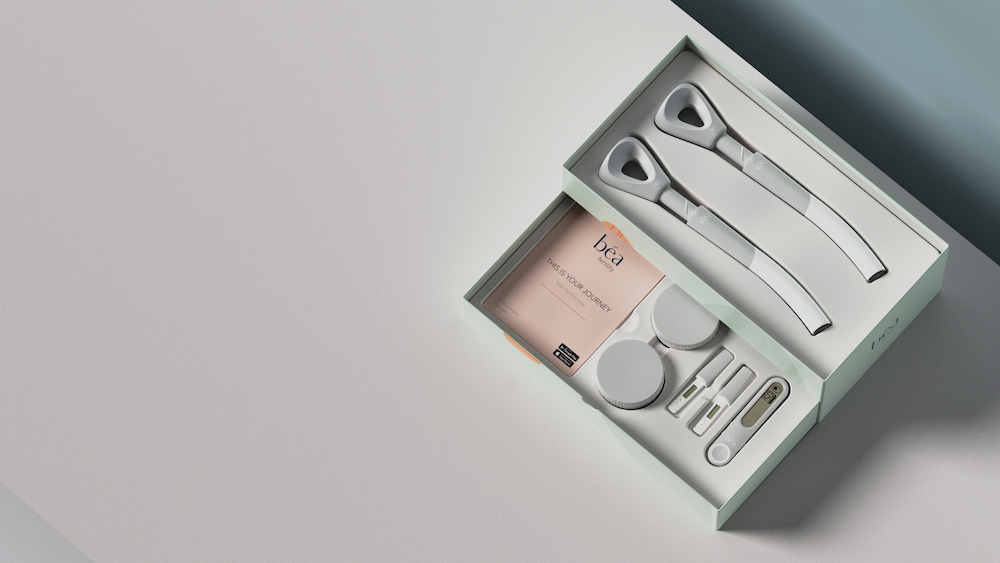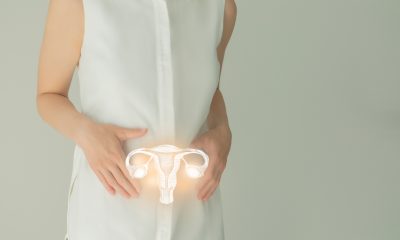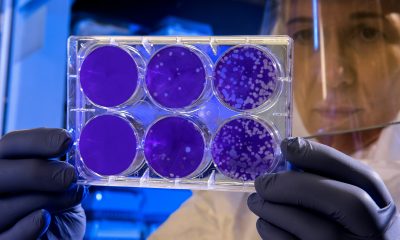Pregnancy
Home insemination makes fertility care more affordable for thousands ineligible for NHS treatment

At-home artificial insemination sees increasing popularity, as only 32 per cent of the IVF cycles in England are covered by the NHS.
The medical firm Béa Fertility is preparing to launch an intracervical insemination (ICI) kit that can safely be used at home, aiming to make fertility treatment more affordable for those who can’t afford IVF.
ICI is a type of artificial insemination that involves inserting sperm into the cervix by using a cervical cap. Unlike IVF, when an egg is removed and fertilised with sperm in a laboratory, ICI is a less invasive process that does not involve any hormonal or injectable treatment.
Nicole Leeds, Béa Fertility chief marketing officer, said: “IVF is the tool that is used most often, but it is not needed by everybody and it can be very expensive and invasive. There’s also a hidden cost of it because unless you live in a big city, it can be quite hard to access multiple clinics for appointments.
“That’s why our focus is to make infertility care more accessible and affordable, but keeping the clinical standard. We wanted Béa to offer everything that you need within a kit sent to your home.”
According to recommendations by the National Institute for Health and Care Excellence (Nice), the NHS should fund three full IVF cycles to women under 40 who have been trying for at least two years, and one cycle for some women aged 40 to 42.
Yet, according to a recent report, more than 80 per cent of NHS clinical commissioning groups fail to meet this guidance, forcing couples to go private, where the average cost of a cycle is roughly £5,000.
For those who can’t afford these costs, ICI is a much cheaper alternative. Recent data suggests that ICI has a pregnancy success rate of 37 per cent after six treatment cycles and the trust in this kind of treatment is constantly growing.
“With medical devices is all about being able to speak clearly and honestly about efficacy making patients aware of their options,” Nicole adds.
“One of the most important things is that we will have medical device regulation under the UK regulator,” she explains. “All of our evidence, procedures and manufacturing will be approved in the same way that a device used in a clinician’s office is approved.”
A future partnership with clinics across the country could mean that the ICI home kit would be directly recommended by doctors to those patients who can’t afford IVF.
However, a problem remains unsolved. The UK law for single people or those in same-sex couples means that they will not be eligible for this kit because sperm bought from a sperm bank must be processed through a private fertility.
Nicole explains that unless the law is changed there is little companies can do. “Making sure that all couples can build the family they want is very important to us, but so is obeying the laws of the country that we operate in,” she adds.
“We are actively trying to help people understand fertility better and we are exploring making care accessible to everybody.”
The kit is set to launch later this year and will be priced between £250 and £300 estimated to be around five times cheaper than one round of IUI. The price includes two artificial insemination devices, as well as 20 ovulation tests, a few pregnancy tests and two semen containers.
For more info visit Béa Fertility.
Entrepreneur
The #1 complication of childbirth: The crisis hiding in plain sight

By Dr. Jennifer L. Payne and Alisa Marie Beyer
Postpartum depression (PPD) isn’t just the “baby blues.” It’s the most common complication of childbirth, affecting 1 in 5 new mothers, and yet it remains dangerously underdiagnosed, misunderstood, and too often untreated.
Baby blues vs. postpartum depression
Up to 80 per cent of new moms experience the baby blues: brief emotional shifts, crying, irritability, mood swings, that typically resolve on their own within 1–2 weeks after birth. But PPD is different. It’s a serious medical condition that can begin during pregnancy or emerge weeks or months after delivery. It lasts longer, hits harder, and requires clinical care.
The Impact of PPD:
- 50 per cent of women with PPD receive no treatment
- PPD contributes to nearly 1 in 4 maternal deaths
- It costs the United States US$14+ bn annually in healthcare
Many women don’t recognise what they’re experiencing. Others are too overwhelmed, ashamed, or unsupported to seek help. Meanwhile, our healthcare system is still rooted in reactive models that rely on self-reporting, often when a mother is already in crisis.
A predictive breakthrough: Introducing myLuma
At Dionysus Health, we believe mothers and babies deserve better. That’s why we developed myLuma, the first clinically validated prenatal blood test that predicts a woman’s risk of developing PPD as early as 28 weeks into pregnancy.
Why this matters: A shift from reactive to predictive
Traditionally, PPD is diagnosed after symptoms appear often late, inconsistent, and subjective. myLuma changes the timeline. It gives providers a clear, scientific window into risk before birth so they can prepare personalized support and interventions before a crisis hits.
How it works: The science behind the test
The core of myLuma is epigenetics: the study of how stress and environment affect gene expression without changing the DNA itself. During pregnancy, a woman’s body undergoes massive hormonal, neurological, and emotional changes. These shifts leave molecular fingerprints – biomarkers – in the blood. Using these markers, myLuma predicts PPD with up to 85 per cent accuracy.
Our scientific journey:
- 2014–2020: Discovery of epigenetic biosignatures linked to PPD
- 2020–2022: Patent filings, US$4.5m NIH funding, and clinical validation in 600+ patients
- 2022–2024: Biomarker-brain function mapping, U.S. patent secured, and national accelerator support
- 2025: Awarded US$10m by the Department of Defense to expand clinical trials and pursue FDA approval
So… is this really the first blood test to predict PPD?Yes. Thanks to a decade of innovation in molecular diagnostics, AI-powered analytics, and epigenetic discovery, myLuma offers a new lens into maternal mental health that was never before possible.👉 It’s a third-trimester blood test.
👉 It offers early, personalised insights.
👉 It empowers OBs, midwives, and health systems to intervene before it’s too late.
The solution: Prediction + care coordination
Prediction alone isn’t enough. That’s why Dionysus Health has partnered with Mammha, a leading perinatal mental health platform, to ensure every woman flagged as high risk is met with wraparound support: behavioral health, therapy, doula access, medication planning, and more.
This new model combines biological insight + human support: a proactive care plan tailored to each mother’s unique needs.
What Is a clinical study—and what’s live now?
A clinical study is a carefully designed research trial used to evaluate the safety, effectiveness, and real-world impact of a medical test or treatment. Right now, Dionysus Health is leading two major studies, funded by the U.S. Department of Defense, to validate the clinical utility of our test, myLuma™, the first prenatal blood test that predicts a woman’s risk of PPD.
Study #1: PREVAIL (UVA + Inova Health System) is a 1,000-participant study evaluating how the availability of biological risk information for PPD during pregnancy might influence healthcare decision-making and patient outcomes.
The study follows participants from their third trimester through postpart
um to assess impacts on referral patterns, treatment engagement, and depression symptoms. This information is being used solely for research purposes and is not intended for clinical decision-making outside of the study.Study #2: BRAVE: This observational study follows 1,000 pregnant women using both blood and saliva samples, testing the accuracy of the myLuma biomarkers without sharing results with participants or doctors.
It’s designed to validate the algorithm, strengthen the FDA approval pathway, and expand accessibility—especially for underserved populations or those in rural areas.
Together, these studies are paving the way for myLuma to become the first-ever biological test to predict a mental health condition before symptoms appear, a potential game-changer in maternal care.
Setting the standard in maternal mental health
PPD has long been an invisible crisis. With myLuma, we’re finally changing that. This isn’t just a test, it’s a paradigm shift.
Because when we see it coming, we can act sooner, intervene smarter, and help moms thrive, not just survive.
The path ahead
myLuma launches commercially in October 2025, with clinical pilots already underway in OB and IVF clinics in California, Florida, and Texas.
Together, we can rewrite the postpartum story for millions of women.
Because when mothers thrive, families flourish, and the entire healthcare system benefits.
About the authors
Dr. Jennifer L. Payne is the chief medical officer at Dionysus Health and a leading psychiatrist and researcher in reproductive mental health. She is the founder of the Women’s Mood Disorders Center at Johns Hopkins, vice chair of research at the University of Virginia, and director of the Reproductive Psychiatry Research Program at UVA.
Alisa Marie Beyer is a healthcare executive, birthing professional, and entrepreneur with over 20 years of experience bridging birth and business. As chief operating officer of Dionysus Health, she leads commercial strategy for myLuma, a pioneering prenatal test predicting postpartum depression risk. She also founded Let’s Talk Birthy, providing childbirth education for first-time moms.
News
Why gestational diabetes underdiagnosis is a women’s health crisis

By James Jackson, CEO at Digostics
Gestational diabetes (GDM) is one of the most under-recognised challenges in maternity care today.
Despite affecting around one in five pregnancies in the UK, GDM remains a blind spot in policy and practice, with devastating consequences for women and their children.
New research continues to expose the scale of the problem.
A recent NIHR-funded study published in Diabetic Medicine found that standard NHS testing methods miss over 50 per cent of cases.
Put simply: thousands of women each year go undiagnosed, untreated, and exposed to avoidable risks.
For a condition we know how to diagnose and manage, this represents a serious failure in women’s healthcare.
The human cost of missed diagnosis
When gestational diabetes is not picked up, the consequences are immediate and long-term.
During pregnancy, women face higher risks of preeclampsia, larger babies, emergency C-sections, and stillbirth. Babies are more likely to need neonatal intensive care due to breathing difficulties or low blood sugar.
The risks don’t end at birth.
Mothers who have had GDM are up to 50 per cent more likely to develop type 2 diabetes within 5–10 years. Their children also face an increased lifetime risk of obesity and diabetes.
These outcomes are not rare, nor are they inevitable. They are the product of a testing system that is not fit for purpose.
An unequal system
Current UK pathways rely on risk-factor–based screening rather than universal testing.

James Jackson
This already puts women at a disadvantage compared with countries such as Spain, Italy, and many others, where all pregnant women are routinely screened.
But even within this narrower approach, the NHS faces a further problem: in-clinic oral glucose tolerance tests (OGTTs), used to test for GDM, are prone to delays in blood sample processing, leading to false negatives.
Research shows that when samples are processed correctly diagnoses increase from 9 per cent to 22 per cent — more than double.
The burden of this diagnostic failure falls hardest on women from disadvantaged backgrounds.
Attending early-morning, hospital-based tests is more difficult for women juggling shift work, childcare, or long travel times.
Women from ethnic minority groups, who already face higher rates of maternal complications, are also more likely to be missed. In this way, testing failures are not just a clinical problem but a driver of health inequalities.
The case for innovation
This is where innovation can play a transformative role.
We have seen in other areas of healthcare — from remote monitoring to home blood pressure checks — how new approaches can increase accuracy, improve access, and reduce inequalities.
Gestational diabetes testing should be no different. Technologies such as at-home oral glucose tolerance tests (OGTTs) are designed to meet the same clinical standards as hospital testing, while overcoming the practical barriers of travel, fasting, and sample degradation.
By enabling women to test from home, results can be processed immediately and shared directly with care teams, reducing missed cases and ensuring timely diagnosis.
Early work with NHS Trusts has already shown that this model not only identifies more cases but also improves access for diverse patient groups, including those typically underserved.
From evidence to action
Despite clear data, progress has been slow. Part of the challenge is that more accurate testing uncovers more cases — and more cases mean more workload for already stretched maternity services.
But failing to diagnose does not make the problem go away; it only delays care and worsens outcomes.
In the long run, undiagnosed gestational diabetes costs the NHS more through emergency interventions, neonatal intensive care, later-life type 2 diabetes, and the ongoing workload and cost pressures this creates for primary care.
The evidence is clear. Now it must translate into policy. That means:
- Recognising underdiagnosis as a patient safety issue on par with other maternity scandals.
- Guaranteeing that all women offered testing receive accurate, reliable results, rather than being failed by flawed processes.
- Supporting innovation that improves accuracy and equity, whether in the clinic or at home.
- Embedding the patient voice in service design, especially from women in disadvantaged and minority communities most affected by current failures.
A call to prioritise women’s health
Gestational diabetes is not a niche concern; it is a mainstream women’s health issue with lifelong consequences.
Every undiagnosed case represents not just a missed number, but a mother at risk of preeclampsia or birth trauma, a baby at risk of intensive care, or a family facing preventable illness later in life.
As maternity services undergo yet another review, it is striking that the diagnostic gap in GDM remains so little discussed.
We cannot claim to be serious about women’s health while ignoring one of the most widespread and preventable sources of harm in pregnancy.
Innovation has a role to play — but innovation must be matched by policy will.
If we are to modernise maternity care, we must start by ensuring that every woman has access to accurate, timely, and equitable testing for gestational diabetes.
Because every mother deserves certainty. And every baby deserves the best start in life.
Wellness
Trainer designers urged to ditch ‘shrink it and pink it’

Sports footwear manufacturers are being urged to abandon the ‘shrink it and pink it’ approach to women’s running shoes, new research suggests.
The practice of simply making men’s shoes smaller and changing the colour fails to address women’s distinct anatomical and biomechanical needs, researchers found.
Over the past five decades, brands have spent billions developing trainers to prevent injury, maximise comfort and boost performance — but most research has been designed for and tested on men.
The researchers wrote: “Overall, our findings highlight a critical gap in the design of running footwear, which has been traditionally based on male anatomy and biomechanics.
“While participants did not always report being unable to find suitable footwear, their experiences reflected a process of trial-and-error adaptation, often without guidance or purpose-built solutions.
“This suggests their needs are not proactively addressed in current footwear design or communication.”
The researchers interviewed 21 female runners in Vancouver to explore whether they faced difficulties with footwear for running.
The group included 11 recreational runners averaging 19 miles per week and 10 competitive runners averaging 28 miles, aged between 20 and 70, with running experience ranging from six to 58 years.
Running shoes are typically built using a three-dimensional foot-shaped mould known as a last, which is usually based on male foot anatomy.
Many sports footwear brands use the same mould across their ranges, making only minor modifications beyond size and colour changes.
Comfort and shoe feel were ranked as the most important factors when choosing running shoes, followed by injury prevention and performance.
Most participants wanted a wider toe box — the front part of the shoe that houses the toes — along with a narrower heel and more cushioning.
Competitive runners also sought performance-enhancing features, such as carbon plates, provided they did not compromise comfort.
Both recreational and competitive runners emphasised the importance of buying shoes from trusted retailers to prevent injuries. They also highlighted the need for different shoe designs suited to various running contexts — including racing, training, speed sessions and injury recovery.
Nine women who had run during pregnancy or after giving birth said they needed larger sizes, wider fits and extra support and cushioning.
Competitive runners also reported needing added cushioning and support features as they grew older.
Designing running shoes specifically for female feet rather than adapting men’s models would likely improve comfort, reduce injury risk and enhance performance, the researchers said.
They concluded: “We strongly recommend that the footwear industry should move beyond simply scaling down men’s shoes to fit women’s feet.
“Instead, there is a need for sex- and gender-specific designs that accommodate the distinct foot morphology of women and their social constructs and preferences, all of which evolve across the lifespan.”

 News20 hours ago
News20 hours agoDozens of women report suffering painful burns after using Always sanitary towels

 Menopause2 weeks ago
Menopause2 weeks agoFDA plans to revise black box warning on menopause hormone therapies

 Wellness2 weeks ago
Wellness2 weeks agoAI-powered women’s health companion Nexus launches in UK

 Fertility2 weeks ago
Fertility2 weeks agoScientists turn human skin cells into eggs in IVF breakthrough

 News7 days ago
News7 days agoWomen’s health innovations recognised in TIME’s Best Inventions 2025

 News2 weeks ago
News2 weeks agoDaily pill could delay menopause ‘by years,’ study finds

 News2 weeks ago
News2 weeks agoAncient herb to modern must-have: Why ashwagandha is capturing UK women’s attention

 Menopause3 weeks ago
Menopause3 weeks agoNew report exposes perimenopause as biggest blind spot in women’s health





























